Cities of the future: 12 unique projects
Categories: Design and Architecture
By Pictolic https://pictolic.com/article/cities-of-the-future-12-unique-projects1.htmlWhat should be the city of the future? First of all, it should solve the problems of overpopulation, pollution and development by creating dense vertical structures that are interconnected at all levels. Residents will be able to move freely from one place to another on foot. Here are twelve conceptual cities, some of which are already under construction. They are based on free movement, which sometimes goes so far that cars are not needed at all.
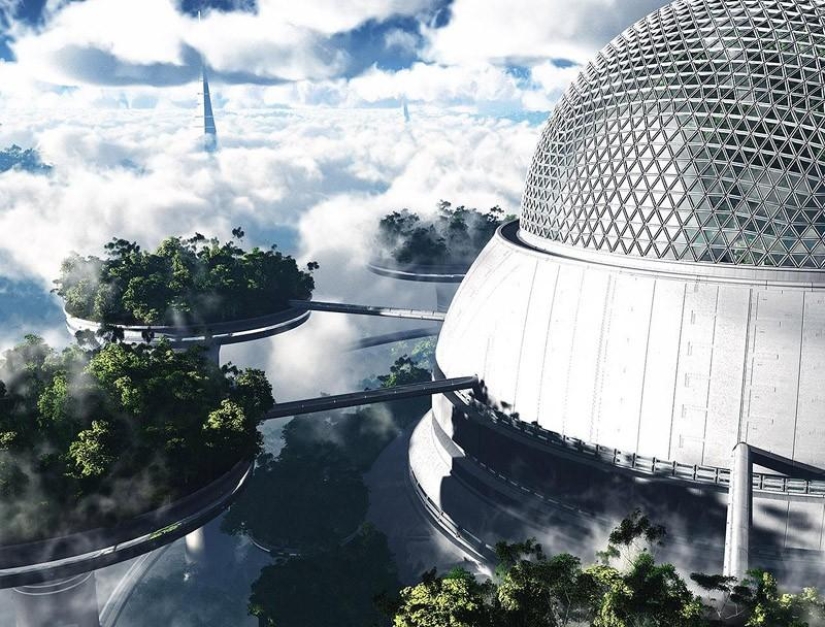
A city without cars
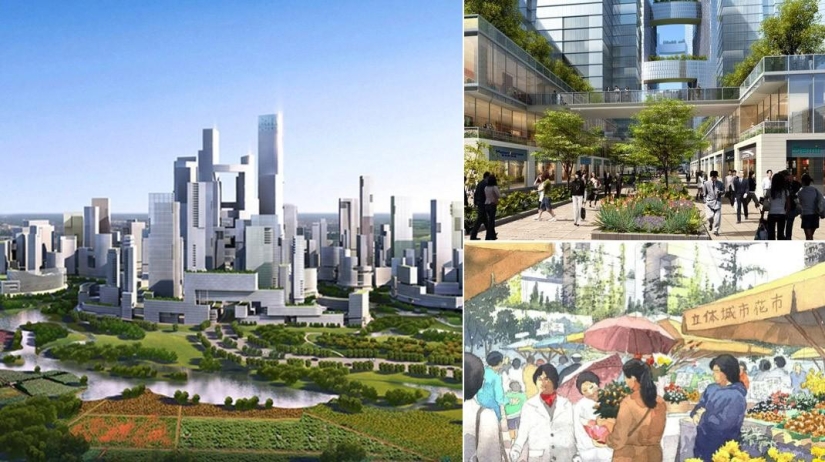
China is creating a car-free city from scratch, building an urban center around a residential core that accommodates 80,000 people. Great City (Big City) should appear in the countryside outside Chengdu. It will be completely pedestrian and green. From the center to the outer ring of parks on foot can be reached in less than ten minutes. Other nearby urban centers will be accessible via public transport. The city will use 48% less energy and 58% less water than other traditional cities of the same size, and will produce 89% less waste.
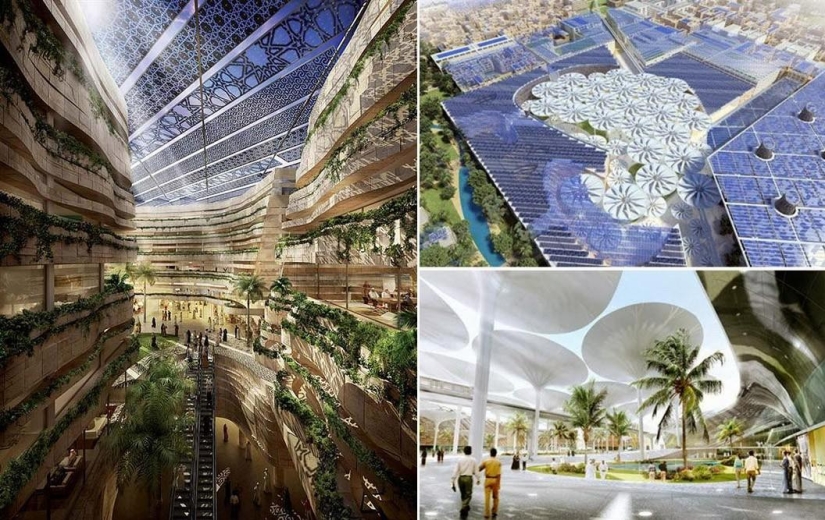
The world's most eco—friendly metropolis — without cars and skyscrapers - is now being built in the desert outside Abu Dhabi. Masdar, the world's first city with zero carbon and waste emissions, will run on a public rapid transit system instead of personal cars and depend on solar, wind and geothermal energy. Giant "sunflower caps" will provide a movable shade during the day, will store heat and release it at night.
Lawn City

MAD Architects sees Shan-Sui as the city of the future. The concept is based on the worship of mountains and water in China, so the concept consists of large-scale multifunctional buildings with a large number of public places where people can gather, socialize and enjoy nature. Dense settlement leads to the fact that all the necessary resources are easily accessible within an easy walk or movement by public transport. Architects claim that a high density of life is much more stable as an idea when building a city than the current trend of "boxes that have taken over the world." This concept is also based on easy access to nature, as well as to schools, places of health and work.
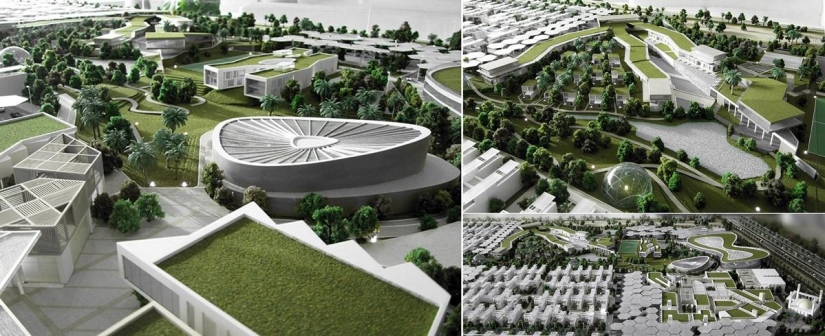
Baharash Architecture proposes to include "best practices in ecological construction" in Dubai, focusing on public relations and social interaction against the background of green spaces. The structure consists of 550 villas, organic farms, educational institutions and 200,000 square meters of solar panels. The city will independently generate 50% of the necessary energy and compensate for its carbon emissions through public transport.
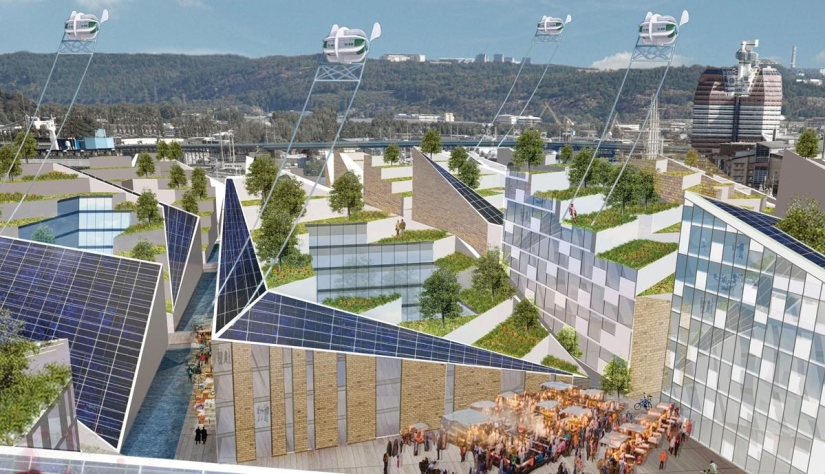
Swedish Gothenburg can be even greener, according to Kjellgren Kaminsky Architecture. Super-dense buildings will make Gothenburg self-sufficient in terms of energy and food. The roofs will house windmills for growing food and solar panels for generating electricity. Dense buildings reduce road traffic, and the river becomes a more significant means of transportation.

"Melbourne is not growing, but is growing up and down," John Wardle Architects says about its Multiplicity concept, in which the Australian city is presented in a hundred years. "New air and underground routes open up completely new prospects for the city. Airplanes and urban topography make it possible to collect food, rainwater and energy from new sources in the future."
Pedestrian City
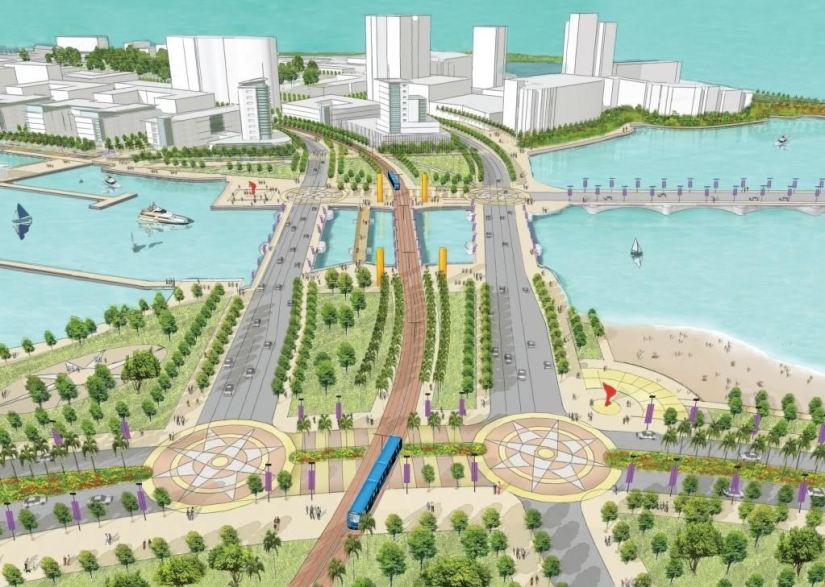
The entire city of San Juan in Puerto Rico is undergoing a $1.5 billion transformation and is turning into a "city for walking" with a new public transport system. This is the largest and very controversial change. Cars are prohibited within the city limits. San Juan has been suffering from a declining population for the past 60 years, and the authorities want to attract new people by charming them with a pedestrian zone in the heart of the city, where pedestrians will not have to worry about cars or inhale exhaust fumes. The beautiful beaches of the city are now inaccessible due to ports and excessive dependence on cars.
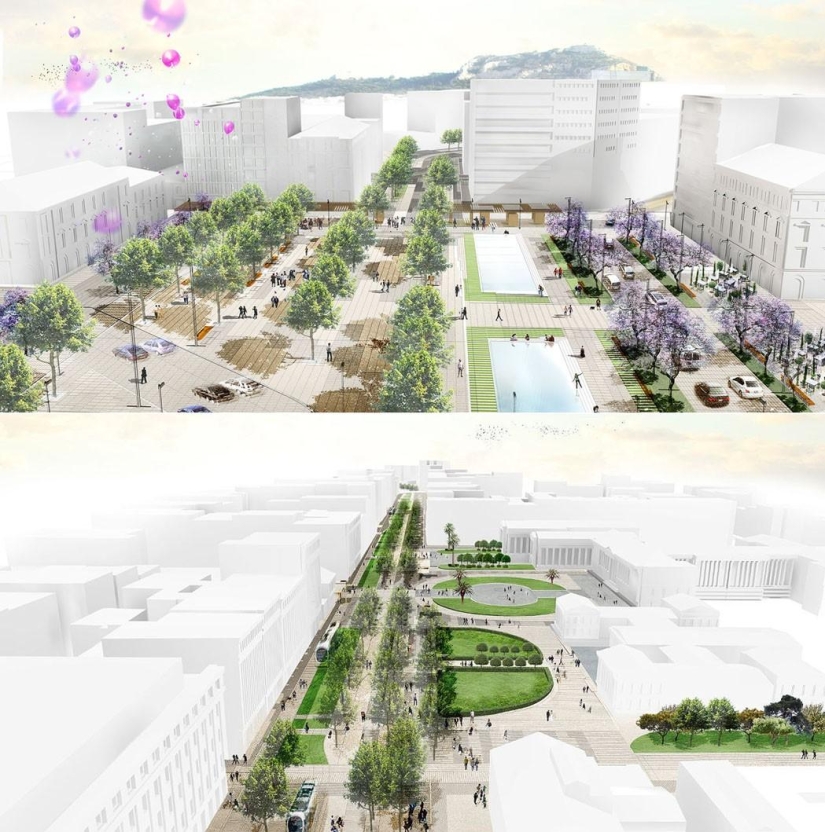
The winning project in the framework of the ReThink Athens competition from OKRA turns the heart of the city into a bright, green and accessible center for pedestrians, not cars. Green areas provide shade and shelter, mitigate the heat, encouraging more active recreation. The new green avenues also provide passability to all surrounding areas.
Floating City

Haiti is an island nation ravaged by poverty and natural disasters, like the earthquakes that leveled most of Port-au-Prince to the ground and left millions of people homeless. Architect E. Kevin Schopfer presented a new floating city for 30,000 inhabitants in close proximity to the shore with a living area supporting agriculture and light industry. The 3-kilometer-in-diameter complex consists of four blocks in the form of floating modules connected by a linear system of channels. Able to withstand hurricanes and typhoons, the city can be expanded if necessary.
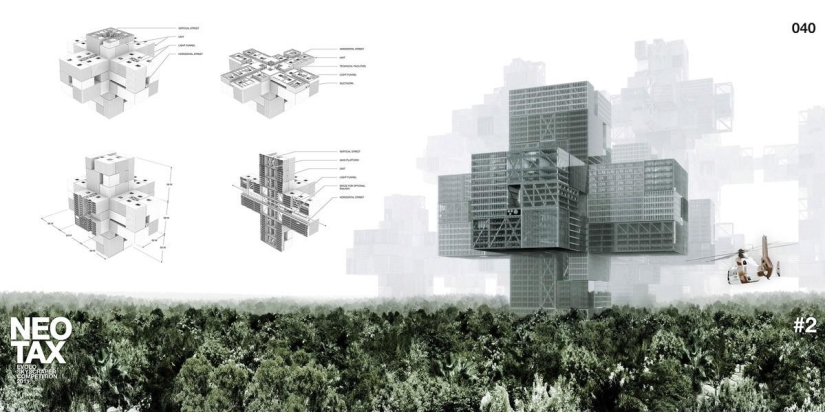
What if our cities were as if our architects were working with a three-dimensional grid? The idea belongs to the eVolo 2011 Skyscraper Competition and is called NeoTax. Buildings that grow upwards and further. Organized into horizontal and vertical street grids, the buildings are based on a modular system where each module can be viewed as a separate building connected to another at ground level. Roughly speaking, we will all be neighbors and will not uproot green spaces for the sake of construction.
The city of "pebbles"
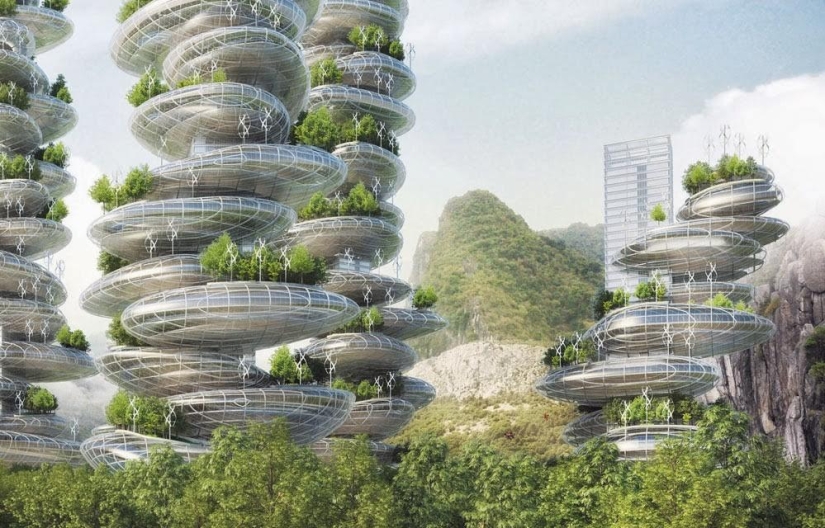
Belgian architect Vincent Callebaud is known for his design, which draws inspiration from natural forms, such as floating cities in the shape of a lotus. This time he presented the vertical city of Shengchen in China, made in the form of cairns, or stone pyramids. "The task is to create a favorable urban environment with zero carbon emissions and positive energy," says the architect. In this project, the city should live according to the laws of the jungle, be high-density and have gardens and vegetable gardens arranged directly in residential towers. Each tower contains 20 glazed "pebbles" covered with solar panels and wind turbines.
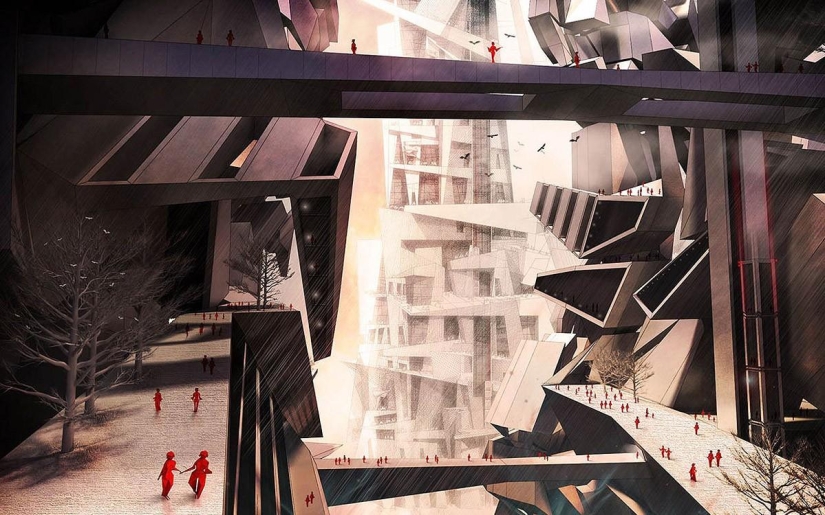
What does it feel like to live in a city free of fear? This concept was created for Now+When, the Australian Urbanism exhibition in 2010, and focuses on the things that people do, free from fear, and not oppressed by it in modern cities. To do this, the city should build such lattice streets and premises that would emphasize the relationship and movement. Visible connections connecting various buildings and neighborhoods at all levels of the city would allow citizens to feel more open.
Recent articles

There are many places in the world where only the chosen ones can be. The cities of Mecca and Medina in Saudi Arabia are well known ...

This collection of photos will clearly please the little inner perfectionist who lives in each of us. It doesn't matter how much ...

If you don't feel good about the donut you ate for lunch, relax - it can get worse ... At least you didn't eat the ...